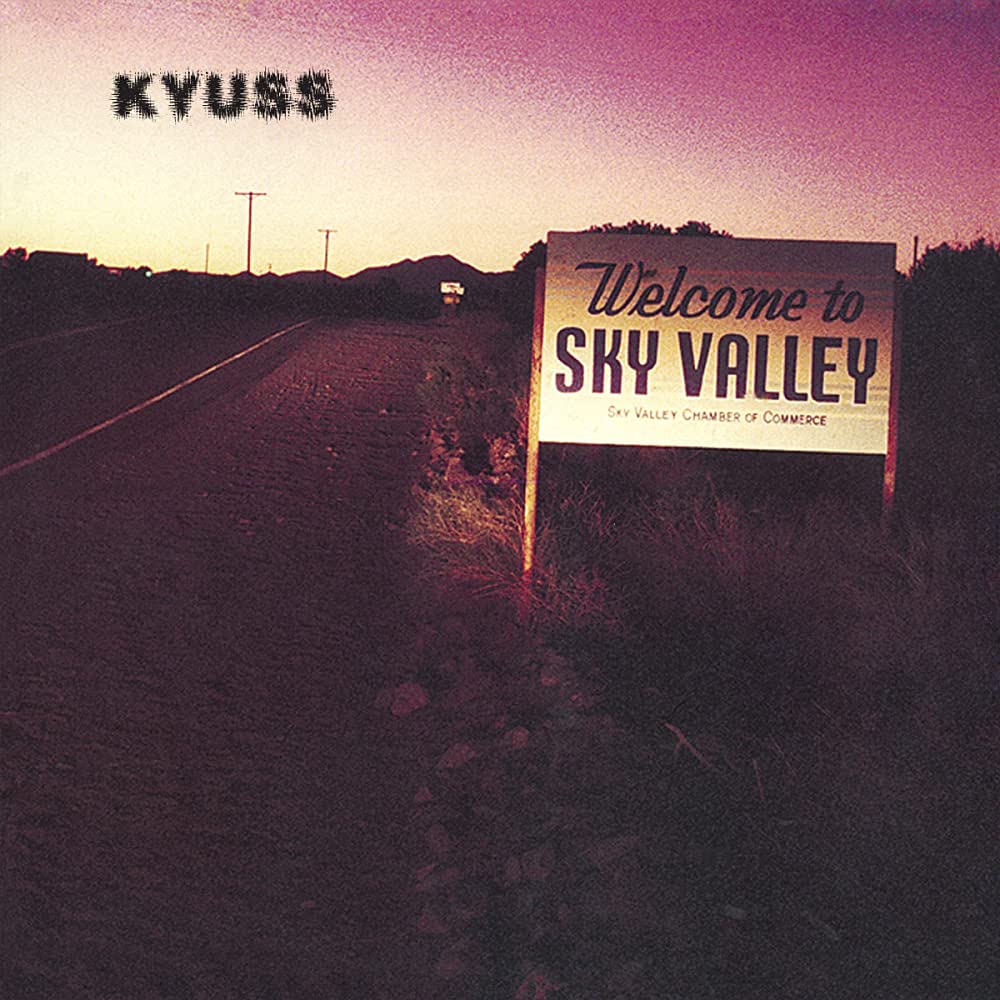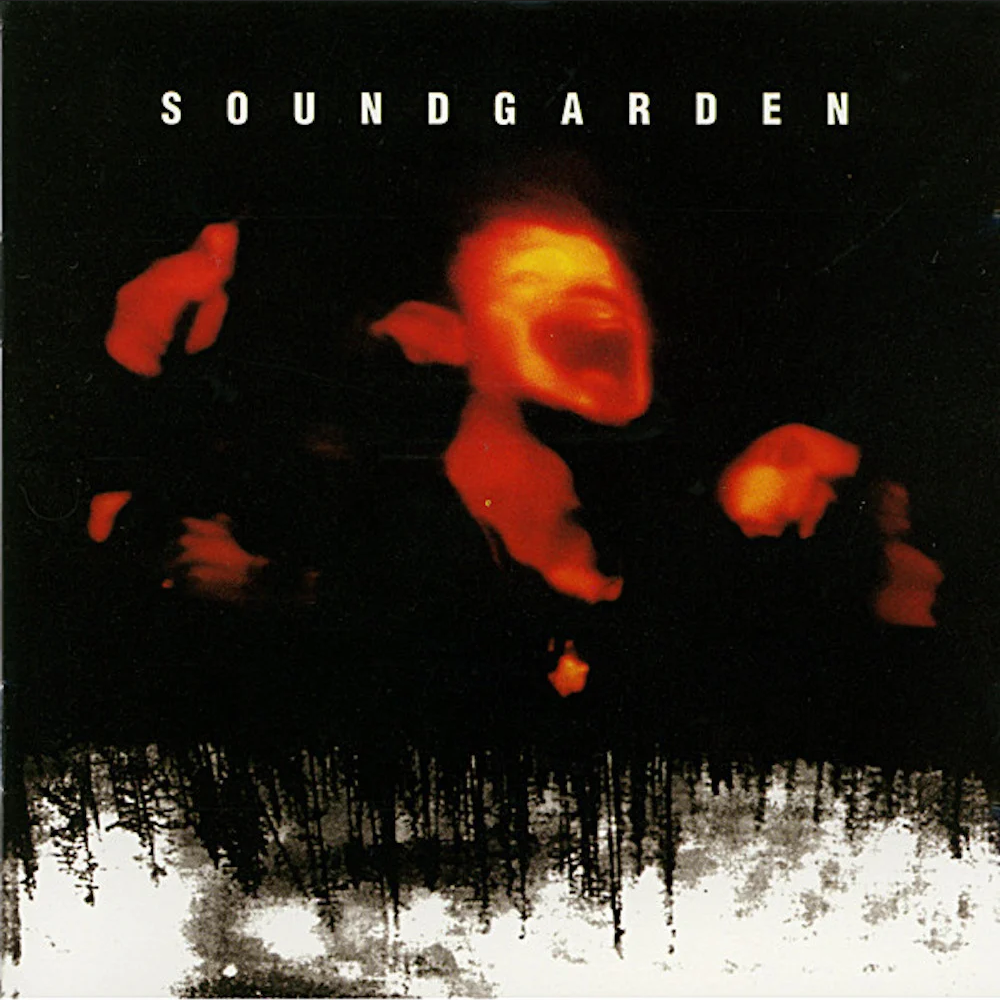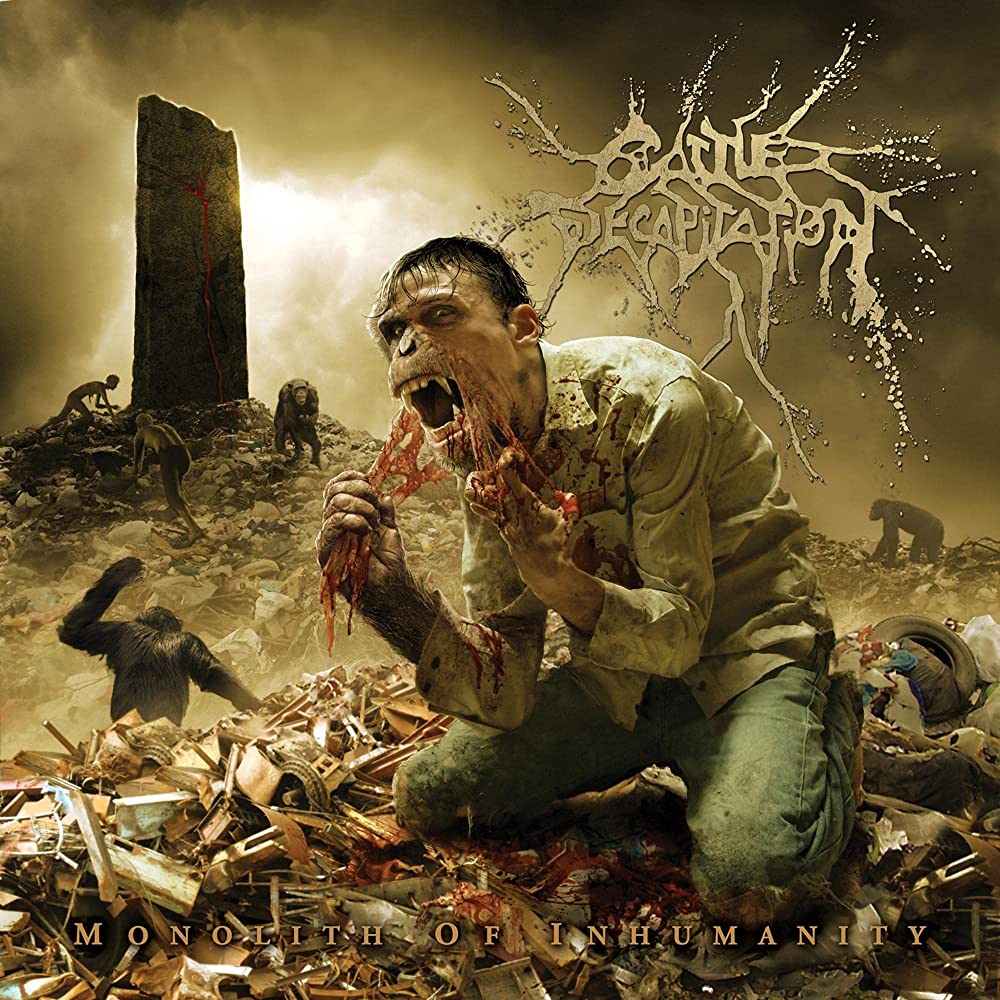NOTE TO THE READER: This review is unique in that it highlights three albums that I consider to be almost flawless. In the case of each, I have only recently come into possession of vinyl copies of these albums, leading to their inclusion here.

In the words of the Good Doctor: “… no explanation, no mix of words or music or memories can touch that sense of knowing that you were there and alive in that corner of time and the world. Whatever it meant…”
Old Raoul Duke was referring to, of course, San Francisco during the Summer of Love. I firmly believe, however, that the same sentiment is shared by those who were present in the Palm Desert scene.
Through some freak chain of occurrences, a group of musicians began to coagulate from a sea of bored youth that crossed with skateboarding culture in Palm Springs during the late 20th century. The area had been, hitherto, a summer home for California socialites – leaving the local, punk rocker sons and daughters of the prissy folk plenty of time to hijack drained pools and convert them into makeshift skate parks during the off-season; make time while the owners are away… this would occur right after the last fringes of the Acid Wave fizzled out around Palm Springs in the late seventies and early eighties; riding on the coattails of Hendrix, Zeppelin, the Stones… Through this strange and chaotic maelstrom emerged a very unique confluence of both punk and psychedelia that would carve out a space for “Desert Rock” as a subgenre of heavy music.
However, all this exposition is for naught. Let me state the essence of my review before I waste any more breath:
Before Nirvana and Seattle Grunge– there was Kyuss.
I am a firm believer that there is no band so sorely under-recognized as Kyuss. To restate the obvious: “…no explanation, no mix of words…” could ever hope to encompass the atmosphere of what they create. Blues for the Red Sun, the predecessor to Welcome to Sky Valley, is often considered the most successful of Kyuss’ recorded efforts – a personal favorite of Dave Grohl, who began advocating for the album’s genius just after Nirvana broke. Red Sun never spares a dull moment. As a matter of fact, I don’t believe that Kyuss had ever recorded a dull moment in the space of their entire career. Even during the long, drawn-out jam sections that occur very often within their compositions, they manage to maintain that mesmerizing sense of psychedelia that keeps the listener locked in during instrumental breaks…
Here again, words fail. As I will reiterate, I can never hope to explain the magic of Kyuss in prose. It is something that can only be experienced, and even I have not experienced Kyuss to its fullest form. To truly understand what Kyuss was, you would have to have attended a Generator Party. As previously stated, the whole deal was borne out of dissatisfied and bored youth – one cause of this boredom was a lack of contemporary punk shows or other musical gigs happening in the area. So eventually, one bright mind thought: “I have a generator, the bands have amps and gear… and the Desert is a million miles of open space under the night sky. Let’s just do it ourselves.” This environment is where Kyuss cut their teeth: in front of a thousand and one kids just gone absolutely mad creeping wild in the barren wilderness, all unified by the massive and unrelenting sound. There were heavy punk bands and trippy psych bands in force, but Kyuss was the best combination of the two – plus they were one of the first of their peers to drop their tuning and hit those low, low, low frequencies. They would be, by far, the most successful band to come out of these early burgeoning days; going so far as to open for Metallica (a move that would inspire Brant Bjork to leave the band once he returned to a Generator Party back home after the tour… fed up with the big time).
This same sentiment of being fed up with the way the music industry was developing played an instrumental part in the writing of Sky Valley. The band, knowing that the then-modern CD technology allowed listeners to skip tracks as they pleased, wanted to undermine this selectivity and encourage (or force) the audience to listen to the album in its entirety. As a result, the album is divided into three “Suites” that each consist of 3-4 songs apiece. Original CD copies were encoded with only three tracks. Skipping was possible, but inconvenient – you stand to miss two songs if you decide to switch to Suite II. However, it is not as though this is intended as an idle prank. Each suite is intentionally structured, with searing thrash contrasting the calm and contemplative slow moments. Served independently of one another, each of the three has a very discernible emotional ebb and flow. Combined as a whole, there are very few heavy albums that are structured with such scope and attention to continuity.
To state it with brevity: Just listen to the damn thing.
The vinyl copy of Sky Valley does the album justice, giving a very holistic representation of the sound. It isn’t necessarily anything to write home about, mostly abandoning grandiose presentation and letting the music speak for itself, with the note: “INSTRUCTIONS: LISTEN WITHOUT DISTRACTION”. Additionally, due to the time limitations for each side of a record, Suite II had to be broken up, and “Demon Cleaner” was relegated to Side B, away from the rest of the Suite. No complaints about the sound, but it was largely the same old masterpiece that I had been used to experiencing (not to devalue the album itself).
DOCTOR’S NOTE:
The Patient is exhibiting symptoms of extreme anxiety, restlessness, lack of sleep, an inescapable sense of mortality, and general crippling tethers to this physical realm. It is immediately suggested that the Patient retreat to the desert with one (1) gas generator, one (1) copy of Welcome to Sky Valley by Kyuss, five (5) large PA speakers w/ amplifier, one (1) tent w/ camping supplies, zero (0) electronic devices or cell phones, and several (5-6) ancient tomes on transcendental meditation and ethereal consciousness.
Repeat as needed until symptoms cease.

Through the pure mechanism of reading the above-listed artist and album, about seven in ten people got transported back to their childhoods. Forged in the Seattle Scene, outlasting the other volatile and self-destructive habits of their peers for a lengthy time, creating a legacy of radio hits and incredible masterpieces… Soundgarden can speak for itself many times over.
In my opinion, Soundgarden is Seattle’s answer to Kyuss. Soundgarden offers the same psychedelic appeal that the Palm Desert manifested, but in a somewhat more digestible way that could appeal to burnt-out hippies and trailer park dwellers alike. Something that you didn’t have to be there, out in the desert, to experience fully. Superunknown, to this end, was Soundgarden’s smash hit album. Just enough of that punk fury combined with enigmatic and melodic patches that were written from start to finish to be played during the summertime, with windows down – bombing down the highway at speeds just south of irresponsible.
As stated, those familiar with the more prolific tracks from this album need no introduction. “My Wave”, “Fell on Black Days”, “Spoonman”, “The Day I Tried to Live”, the Title Track… and, oh, a little song called “Black Hole Sun” that I’m sure has been heard by everyone that still draws breath on this planet.
I vividly remember the moment I [re]discovered this album – “Black Hole Sun” came over the radio while I was riding the bus to school one morning… and I was overcome with a wave of nostalgia. I had heard the song before, at an age that far preceded my ability to form long-term memories. Then I connected the dots – a deep, buried moment in my head of drawing in my Dad’s basement studio while he played the Peter Frampton instrumental cover of the song… and then all the odd trappings of old memories followed. I see images of red-purple crayons strewn across 8×11” paper on an old Acapulco carpet, hanging the drawings in the storage space under the stairs… some overriding sense of the color blue, like the backdrop they use for bad school photos… an innocent feeling of the spring season, picking mint leaves from the side of the house and helping collect the dead undergrowth… the old CD player that had a screw-on bearing like a large counterweight…
That, there, is the only accurate way to give one an impression of what this album does. It churns up memories. Even if it’s your first listen, the impression that it gives a person will be so strong that they will recall it very profoundly upon revisiting. Atop other memories, and casting aside these very preliminary and early recollections, I also associate the album with the summer of sophomore year – after I picked up the CD at a discount, ripping open the cellophane in the parking lot of WalMart on 21st St. and popping the trunk of my Dad’s ’92 Acura to jam it into the old fashioned disk mixer… Careening down Jones Road as the sun just began to touch the horizon, sunroof down, Chris Cornell screaming and the wreck of you is the death of you…
(This romantic scenario came after an infuriating battle against faulty buttons; given the object of re-entering the unlock code for the stereo system, since the battery in the car had been replaced and the primitive security measures built into the device reverted to “Good Acura Has Stolen Star IV” Mode.)
Again, I get lost in memories just talking about these songs. Whatever emotional power and weight was imbued within these compositions is immense, so much so that the lasting impression meshes with the subjective experience of the listener to an almost unnatural degree.
First, it steals your mind, and then it steals your…
All of this is some very, very heavy magick to be putting into a gatefold double LP. The bastards have pulled it off, though; adorning my 2014 reissue copy with their haunting artwork for the album and placing alongside it a very neatly illustrated booklet that outlines all the lyrics and thank yous along with some different portraits of the band (very different from the wild, distorted images I recall from the CD lyric booklet that I shrewdly folded out of the jewel case in the parking lot). The quality of the vinyl itself isn’t necessarily outstanding; it lacks the particular care that a Third Man Records release may boast, but it doesn’t fail the music at any point – no harm in being generally solid instead of outstanding.
Another memory comes to mind – hiking through the depths of Black Hand Gorge with my good friend… then seeing a group canoeing on the river down below us. I flash G. S. a wicked smile and hoist myself up atop a nearby cliff face, wedging the soles of my deteriorating Doc Martens into the cracks of the stone… dangling above a sheer river bank, then letting loose a deep bellow from the diaphragm, projected out across the river:
…and I heard it in the wiiiiind…
…and I saw it in the skyyy-yyy…
…and I thought it was the end – I thought it was the 4th of July…

Putrid, rotting corpses… suicidal messiah figures… rapid de-evolution of mankind… walking to buy coffee at LaRose Market… headbanging in the Loblaws chip aisle…
These are my memories of Monolith of Inhumanity. There is a drastic contrast between the horrible, gut-wrenching screams of Travis Ryan against a crowd of god-fearing Roman Catholics giving you the malocchio while you are taking a trip to buy pastries for your Sicilian Grandmother… Quite a backdrop for this sort of album.
Cattle Decapitation (Cattle Decap, Cattle D, Cat D’cap…) is considered, in most circles, to be the preeminent goregrind band. While they have, since their earlier works, strayed from their strictly grindcore roots into the realm of more brutal death metal, they have put forth some of the most technically challenging and sonically diverse music within the subgenre. They are known for their particular brand of incredibly intricate guitar riffs combined with slam sections combined with some of the most unique vocal delivery of all time – and if Cattle Decap ever had a magnum opus, then it was Monolith.
What a time to discover it – a trip to Canada with Dad… I was very careful to keep my earbuds solidly connected to my phone. I’m sure that if my Nonna had heard even a split second of this music she would have sent me to Confessional.
The base message that Cattle D aims to deliver is simple: Humans are Animals, and We are the Problem. Sandwiched between layers of depraved humor and cold, calculated observation; Decap has managed to condense a mostly philosophical and hopelessly grim concept into a labyrinth of musical complexity. Just the way the album sounds, it feels like it is asking you hard-hitting questions through pure atmosphere.
“How did nature create an animal that was able to separate itself from nature?”
“Why does this animal dress in a pinstripe suit and sell subprime mortgages?”
“If this animal were being crucified, would it call its tailor and ask him for new measurements on account of its recent weight loss?”
… and the twisted part is that these songs will stick in your head if you have a mind for metal. They are very extreme, but also oddly accessible. This album should be the starting point for those seeking to bridge the gap between Anthrax and Devourment (a gap, mind you, that may as well be wider than the River Styx).
The band was inexplicably able to interest my Canadian, half-bohemian, playwright uncle. He somehow saw fit to research the band’s songwriting after I mentioned it to him, and he later began to wax poetic about the intricate guitar work; noting that they would intentionally tune their guitars in arcane and strange ways for a grittier sound. In return, I sang the praises of Travis Ryan, who not only masterminds the poetic content of Cattle D but also delivers it in astonishing fashion. To this day, I have never heard anyone who can faithfully replicate his vocals during the high, tension-relief moments (Ryan discovered that overlaying high-throat screams with less distorted and depraved clean singing makes for a hell of an effect – IE “Your Disposal”). The pure manic aspect of Decap’s melody sensibility complements the vocal hooks well; and when you catch those crisp moments in tracks such as “Lifestalker”, “A Living, Breathing, Piece of Defecating Meat”, and “Do Not Resuscitate”, there is almost a grimly comedic picture that comes to life when paired with the album artwork (a phenomenal piece by longtime Cattle collaborator Wes Benscoter).
Everything told – there are a great many groups that make an effort to be as extreme and shocking as possible, just for grins; but few can be as shocking and as catchy as Cattle Decap.
The vinyl is included with a gatefold jacket (despite being a single LP) that is adorned with the aforementioned artwork on the outside, along with “death portraits” of each of the band members and a very lengthy list of lyrics and thank yous. There’s also a large poster of the front cover that is included – very nice – along with a solid quality manufacture on behalf of Metal Blade. While there are no fancy quirks or melted-plastic pattern trickery situations happening here, I’m still strolling down the Etobicoke side streets listening to songs about Projectile Ovulation… and those are some of the most valuable memories of my life.


